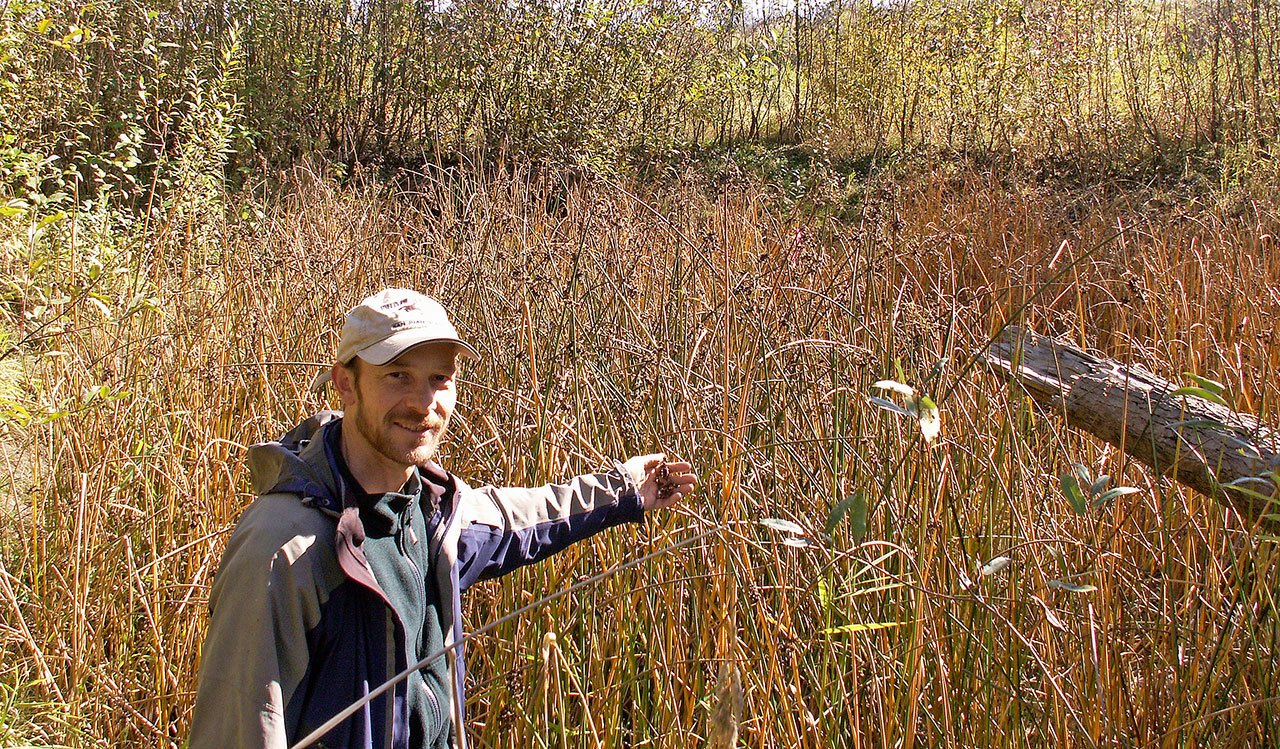By Joel Green
jagreen12@comcast.net
Growing organic vegetables, providing food to local consumers through the Community Supported Agriculture program, teaching kids about farming and nature, and ecological restoration are all in a day’s work at Oxbow Farm and Conservation Center.
It has been 15 years since the farm’s first restoration site was planted in 1999, and Oxbow has come a long way in restoring fish and wildlife habitat. So far, this organic farm bordering the Snoqualmie River near Carnation has done restoration projects on 13.7 acres. About two-thirds (nearly a mile) of the riverfront riparian area are now in the process of being restored to improve salmon habitat.
Before restoration efforts, the river bank was being taken over by invasive plants such as Himalayan blackberry and reed canary grass. Volunteers have worked hard to remove those non-natives and plant native trees and shrubs.
Oxbow Farm is becoming an oasis for fish and wildlife, and a great example of a farm where food production and protecting nature go hand in hand.
The Alder Grove
In 2004, Oxbow Farm began working with Stewardship Partners to restore a strip of land along the river to provide a riparian forested buffer. In the first year, the restoration crew and volunteers with Earth Corps planted red alder, a fast-growing deciduous tree that could soon shade the river, keeping it cool for the salmon.
In later years, Stewardship Partners and volunteers planted slower-growing but longer-lived conifers such as Sitka Spruce, Douglas Fir and Western Red Cedar, along with a variety of deciduous shrubs.
After 12 years, it is a riparian forest, with alders nearing a height of 50 feet, and conifers 15 to 20 feet.
“There’s a much greater variety of plants in here now,” said Matt Distler, Restoration Coordinator at Oxbow. “Honeysuckle, cascara, salmon berry, and dogwood — these shrubs and trees bear fruit at different times of year, and are great for the pollinating insects and birds.”
Riparian forested buffers like this one are essential for salmon conservation. Salmon and trout need cool water, and the riparian forest provides shade to keep water temperatures lower. A riparian buffer stabilizes the river bank to prevent erosion and reduces input of silt to the water; too much silt could smother salmon eggs. The buffer also filters pollutants such as fertilizers and pesticides.
When big trees die and fall into the river, they create diverse salmon habitat, including pools in which the salmon can rest or hide, and riffles where they can feed on aquatic insects drifting downstream.
The Wetland
In 2010, Oxbow Farm collaborated with Stewardship Partners, and with financial support from King Conservation District, Snoqualmie Watershed Forum and Ducks Unlimited, began restoration of a two-acre wetland. The site had been a field of reed canary grass, too wet for farming. The first task was to dig out basins to the depth of the water table to create a series of pothole wetlands within the larger wetland. Then the crew planted trees, shrubs, and emergent plants such as sedges and bulrushes, plus snags and logs to provide habitat for birds and other wildlife.
This wetland now is home to 17 species of birds including hawks, woodpeckers, and songbirds, mammals such as elk, deer, beavers, and voles, and amphibians including Pacific tree frogs and bull frogs. You can hear the din of amorous frogs on spring evenings, and birdsong all spring and summer.
“We’ve often seen woodpeckers drumming on those snags, and hawks will perch on the top, waiting to see what they can catch down below,” Distler said. “This area along the Snoqualmie River is one of the centers of freshwater wetlands in Western Washington, so it’s a good place to add habitat value back into these wetlands.”
The Hay Field
In the past year, Oxbow Farm has partnered with the University of Washington to do bird research at Oxbow.
Lauren Walker, a bird biologist, completed surveys to find out which bird species are using the different kinds of habitat at the farm. Lauren and others have identified 86 different species of birds at Oxbow, using the diverse habitats of fields, forests, and wetlands.
It turns out Savannah Sparrows nest in the hay fields. They make their nests down in the grass during the summer and may raise two broods over the season. During the 8 to 12 days after hatching, both parents catch insects and bring food to their young, helping to control the insect populations at Oxbow Farm. That helps Oxbow grow beautiful and tasty vegetables without using pesticides.
Finding out about the Savannah Sparrows at Oxbow Farm got people thinking about what happens when the hay gets mowed.
“The question for us is, can we time our mowing in such a way that we maintain the grassy area but don’t mow the nests when the young are still fledging,” Distler said. “We may be able to do this by mowing in April, and then holding off mowing again until September.” So bird conservation can be as simple as waiting a bit longer to mow the field.
Through these projects to restore the riparian forest along the river, restore wetlands, and mow hay at the right time, Oxbow Farm is providing a safe haven for a variety of fish, wildlife, and birds.



